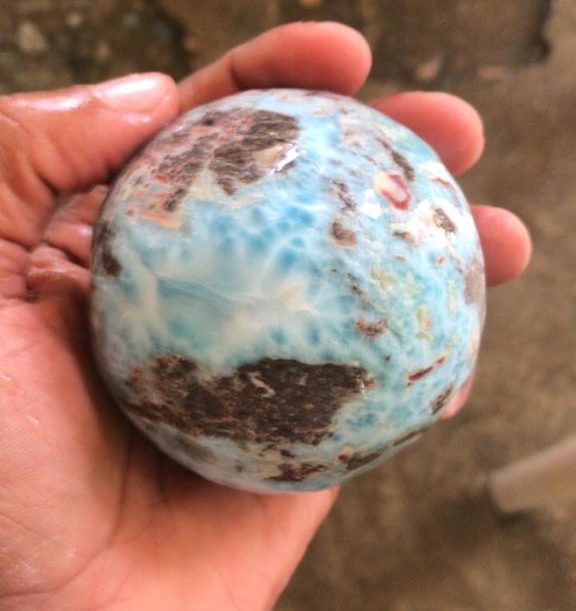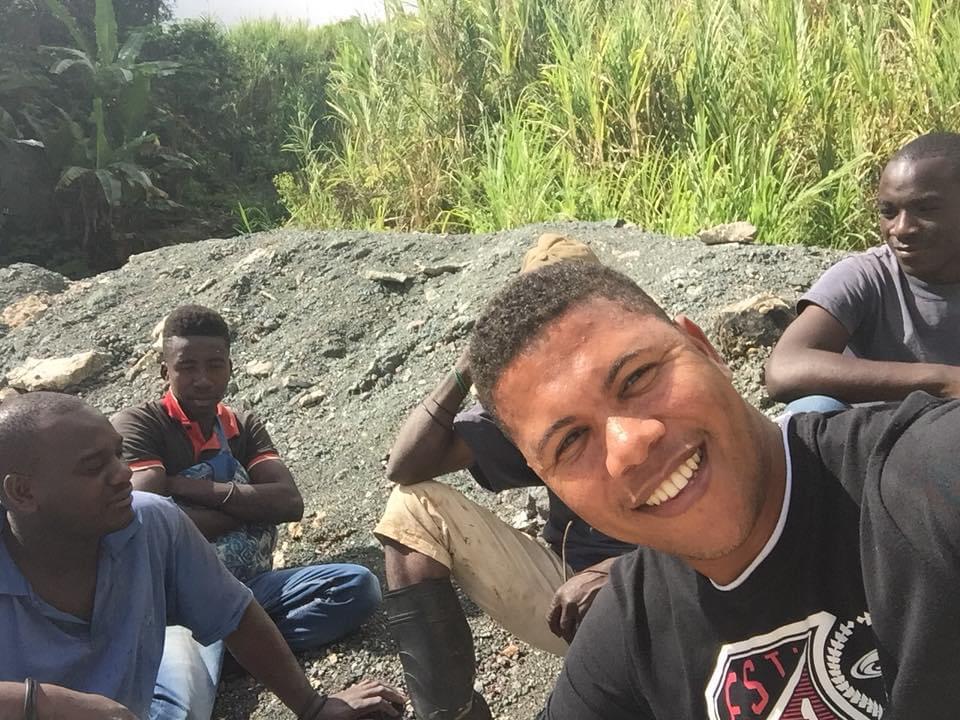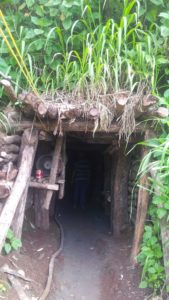Larimar is a semi-precious stone found only in the Dominican Republic, which despite of having formed about 35 million years ago has an original history and recent fame.
Multiple properties are attributed to it about love and healing, among others.
What is Larimar?

Larimar has been classified as a fine stone since 1979. It is a variety of pectolite that can only be found in the Dominican Republic.
A pectolite is a mineral that belongs to the group of silicates. Its name comes from the ancient Greek Pectos (“to put together well”), alluding to the groups generally formed by its crystals.
Larimar’s formula is NaCa2 Si3 O8 (OH).
It has a volcanic origin: cobalt gives it blue tones, ranging from very pale blue almost white to dark blue, often deep turquoise blue.
However, the designation “turquoise” is prohibited, as Larimar has its own name.
Where can you find Larimar?
Larimar is a semi-precious stone that is only found in the Barahona region, in the southwest of the Dominican Republic.
This makes Larimar a rare and unique stone, which visitors with pleasure take away as a souvenir of their stay in our country.

at the Larimar mine
In the past, the Larimar, which did not yet have its official name, could be easily found on Bahoruco beach, a few kilometers from Barahona.
In fact, local children used to have fun collecting Larimar pebbles that the Bahoruco River dragged and deposited on the beach in bottles, to sell them to visitors.
The mines that are upstream of the river have been operating since 1976. It is a mountainous region, very humid and exuberant.
The exploitation of Larimar is difficult and dangerous; the mines are always deeper and their access is difficult due to the steep and slippery terrain.
Origin and story of “Larimar”
The first Larimar mine was discovered in the Dominican Republic in 1916 by a priest, Father Miguel Domingo Fuertes de Loren, from the Barahona parish, in the southwest of the island.
At that time, the stone was not known or valued and the Dominican Ministry of Mining denied it the permission to operate the mine. The stone and the mine fell into oblivion.
It was not until 1976 that a certain Miguel Méndez, a craftsman, learned of the existence of that stone.
Helped by Norman Rilling, a geologist friend of the Peace Corps, they searched for the blue stone and began to extract it.

At first they named it “Travelina”, but Miguel Méndez decided name it “Larimar” in homage to his own daughter.
By associating the nickname “Lari”, of his daughter Larissa with the word “mar” (“sea” in spanish) due to its intense blue color, he formed the name that today describes the beautiful blue stone nowadays recognized as the gem with the color of the Caribbean Sea.
In 1979, Larimar was classified as a semi precious stone; The only Larimar mine in the world is located in Los Chupaderos, in the National District of Bahoruco, 23 kilometers from Santa Cruz de Barahona.
On October 21, 2016, the Ministry of Energy and Mines issued a resolution that prohibited the export of amber and larimar.
Today, Larimar is only allowed to be exported in separate polished pieces.
Since 2018 in the Dominican Republic, “National Larimar Day” has been celebrated every November 22 in memory of the same date when in 1916, the priest Miguel Domingo Fuertes, discovered the stone in Barahona.
Today, Larimar is considered as THE stone “symbol” of the Dominican Republic by both Dominicans and visitors in our country.
Whether as an jewelry or decorative element, raw or polished, Larimar stone arouses a great fascination due to the variety of its blue colors.